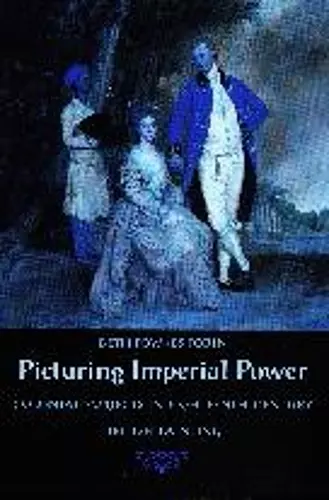Picturing Imperial Power
Colonial Subjects in Eighteenth-Century British Painting
Format:Paperback
Publisher:Duke University Press
Published:26th Feb '99
Should be back in stock very soon

Examines the intersection of visual culture and political power in late-eighteenth-century British painting. Focusing on paintings from British America, the West Indies, and India, Beth Fowkes Tobin investigates the role of art in creating and maintaining imperial ideologies and practices - as well as resisting and complicating them
A study of colonialism and art that examines the intersection of visual culture and political power in late-eighteenth-century British painting. Focusing on paintings from British America, West Indies, and India, it investigates the role of art in creating and maintaining imperial ideologies and practices - and resisting and complicating them.This study of colonialism and art examines the intersection of visual culture and political power in late-eighteenth-century British painting. Focusing on paintings from British America, the West Indies, and India, Beth Fowkes Tobin investigates the role of art in creating and maintaining imperial ideologies and practices—as well as in resisting and complicating them.
Informed by the varied perspectives of postcolonial theory, Tobin explores through close readings of colonial artwork the dynamic middle ground in which cultures meet. Linking specific colonial sites with larger patterns of imperial practice and policy, she examines paintings by William Hogarth, Benjamin West, Gilbert Stuart, Arthur William Devis, and Agostino Brunias, among others. These works include portraits of colonial officials, conversation pieces of British families and their servants, portraits of Native Americans and Anglo-Indians, and botanical illustrations produced by Calcutta artists for officials of the British Botanic Gardens. In addition to examining the strategies that colonizers employed to dominate and define their subjects, Tobin uncovers the tactics of negotiation, accommodation, and resistance that make up the colonized’s response to imperial authority. By focusing on the paintings’ cultural and political engagement with imperialism, she accounts for their ideological power and visual effect while arguing for their significance as agents in the colonial project.
Pointing to the complexity, variety, and contradiction within colonial art, Picturing Imperial Power contributes to an understanding of colonialism as a collection of social, economic, political, and epistemological practices that were not monolithic and inevitable, but contradictory and contingent on various historical forces. It will interest students and scholars of colonialism, imperial history, postcolonial history, art history and theory, and cultural studies.
“Tobin combines an exacting and often lyrical evocation of visual effects in the paintings she considers with the explication of a remarkable range of historical occasions, situations, and transitions. Through her patient accounting of individual images, she opens up wide vistas on the operations of British colonialism while still rendering those operations with dimensionality and great nuance.”—Jill Campbell, author of Nature’s Masques: Gender and Identity in Fielding’s Plays and Novels
“Picturing Imperial Power offers quite wonderful readings of various visual cultural productions, illustrating beautifully the variety and complexity of British colonialism. A valuable and excellent book.”—Inderpal Grewal, author of Home and Harem: Nation, Gender, Empire and the Cultures of Travel
ISBN: 9780822323389
Dimensions: unknown
Weight: 526g
320 pages